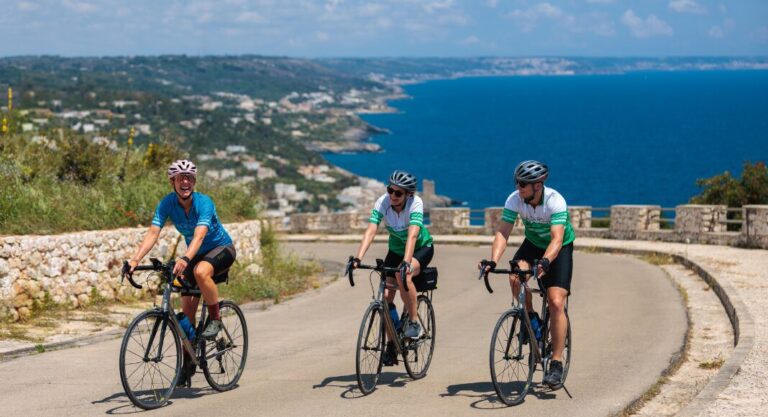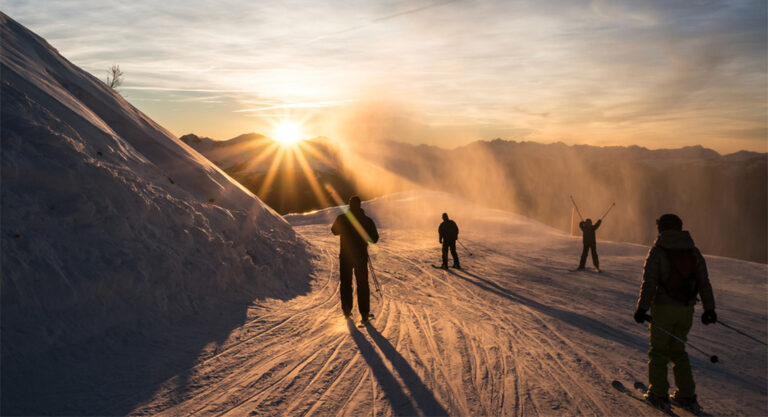July: While Americans flock to Paris to spend money on the Champs Elysées, the French head home, where television sets permanently blare the Tour de France. Throngs of supporters cheer on the sidelines as cyclists make their way around the country, and the color yellow invades the streets. Americans, too, have long loved the Tour yet recent scandals have tainted the red, white, and blue reputation. Before leaving the starting blocks, brush up on the love-hate relationship between Americans and the Tour de France.
Before getting into transatlantic relations, let’s start with a bit of Tour de France history, shall we? The race originated in 1903, born from the mind of Géo Lefèvre, a journalist at popular L’Auto magazine. The first edition was completed in a short six stops… of a few hundred kilometers each, quite a feat for the 21 cyclists that made it to the end. As the number of stops increased year by year, so did the number of participants. Little by little, international cyclists signed on, and the Tour de France began its road towards becoming the world-renowned race it is today.
It wasn’t until 1981, however, that Americans joined in on the fun. Jonathan Boyer was the first, yet his name didn’t manage to go down in Tour de France history. The United States had to wait patiently a few more years, but it sure was worth it. In came cycling legend Greg LeMond, with a name seemingly destined for Tour de France greatness. LeMond’s first Tour was in 1984, and he finished third, with the white jersey for best young racer: not a bad start. When he returned the following year, he managed to step a little higher on the podium with a second place finish. 1986, however, is the year LeMond became a household name. Despite a final round with several crashes, LeMond became the first American to snag the first place of the Tour de France and the coveted yellow jersey. He came home to fame in the United States, a novel concept in the world of cycling. Appearances on Johnny Carson, a Sports Illustrated cover, and the title of Sportsman of the Year were in store for the following months.
His fame stateside, however, was incomparable to the affection he drew from the French – and continues to elicit today. Here was a young American, joyful, irreverent, and an all around great cyclist: a treat to the French spectators, who tuned in every afternoon to watch him perform on the Tour or answer interview questions after the round. After an accident left him unable to compete the following seasons, LeMond attempted a comeback in 1989, and naming it a success would be putting it lightly. Here he was again, at the top of the Tour de France podium, with the closest win ever: an eight-second win over French cyclist Laurent Fignon. You’d think defeating a French cyclist, so close to the end, would put French spectators firmly on the anti-Greg side, but you’d be wrong. The French love a good duel, and LeMond’s incredible comeback made his reputation reach new heights. As his star in cycling waned, his status as a household name remained: when LeMond comes to France for the French Open, his face somehow often manages to appear on entertainment news outlets along with Bradley Cooper or French TV celebrities.
As far as racing goes, the years following LeMond mania saw Spain take top honors, as Miguel Indurain became a five-time Tour champion, the record until Lance Armstrong came along… and lost it all again. Ah, Lance Armstrong. Yet another relationship of love with the Tour de France and French spectators – and France in general – that would turn into disappointing betrayal. As LeMond fever wore down at the Tour, newcomer Lance Armstrong was slowly but surely gaining popularity. He had everything needed to turn him into the darling of the Tour: a touching backstory, a tale of courage and resilience, and impressive performance. In the United States, he became a brand. In France, he managed to make the Tour keep its cool factor. In the early 2000s, the race was losing traction among younger viewers and spectators, save the real cycling aficionados. For the young generation, the Tour de France was becoming the event you read about, heard about, all throughout the month of July but never really tuned into with interest. Lance Armstrong changed that. French teenagers followed his exploits, as he secured a reputation as cycling superhero. In the budding age of reality television, Armstrong was a celebrity whose performance played out on television every single day for a whole month. His appeal spanned all ages: grandparents waited on the sidelines with their grandchildren to cheer Armstrong along as he rode by, infused with a certain kind of motivation that made him incredible.
Incredible – incroyable – is exactly what he was. After winning seven Tour de France titles, the truth burst out in 2013 and shattered the cycling god’s reputation and record into pieces. From fan favorite, Armstrong became the bête noire of cycling. He lost his sponsorship contracts, but most importantly, lost all his titles. In the United States, the media focused on his lies, and the shadow they cast on his endeavors, above all the Livestrong Foundation. In France, while his lies made the headlines, the general sentiment revolved around the fact that Armstrong had cheated the Tour de France. Out went the race’s cool image: an image it still struggles to bring back today, despite being much “cleaner” than it has been in the past.
Greg LeMond had become an outcast for accusing Lance Armstrong of doping, a position that has now brought him back on the forefront as France’s favorite American cyclist. With the nouvelle donne of cycling, does America have what it takes to give France a new Tour sweetheart?
Tejay van Garderen leads the new generation of pro cyclists with an eye on the (yellow) prize. The 27 year-old Washington native has been cycling for years and has already won his fair share of white jerseys in various races. Van Garderen strays away from the idea that the sport needs an idol, which was the case with Armstrong, telling Cyclingnews in April, “I see us as the underdogs riding together, being strong friends, being excited to be here but also capable of taking on the best.” Will they succeed? Wear your prettiest cycling jersey, grab an American flag, and head out to the Tour de France roads from July 2nd to 24th to find out.






